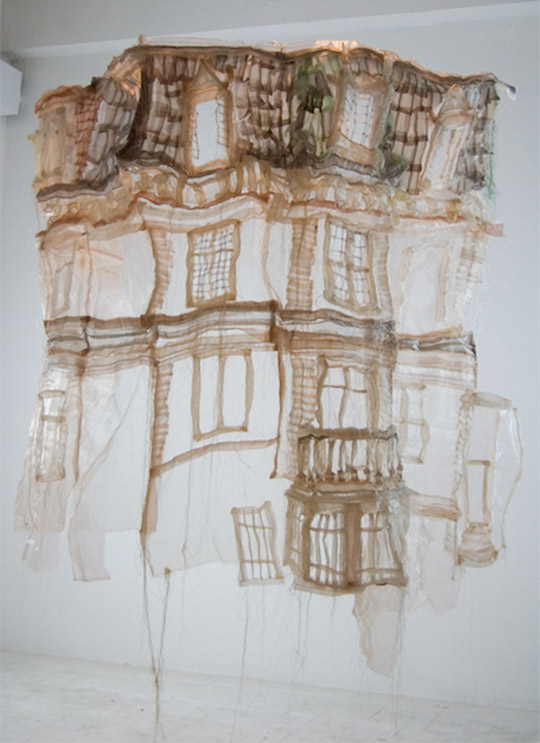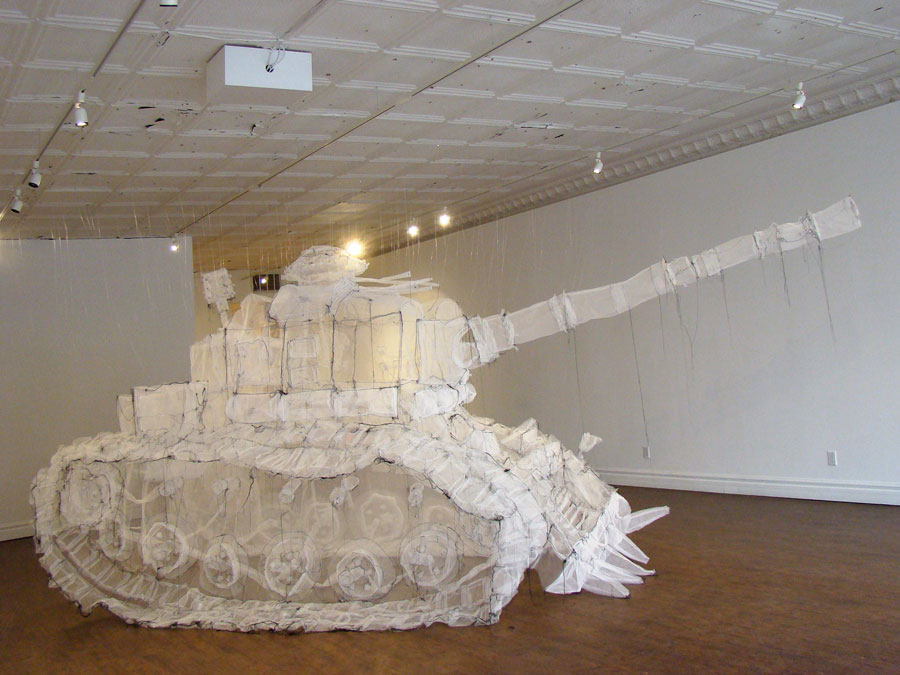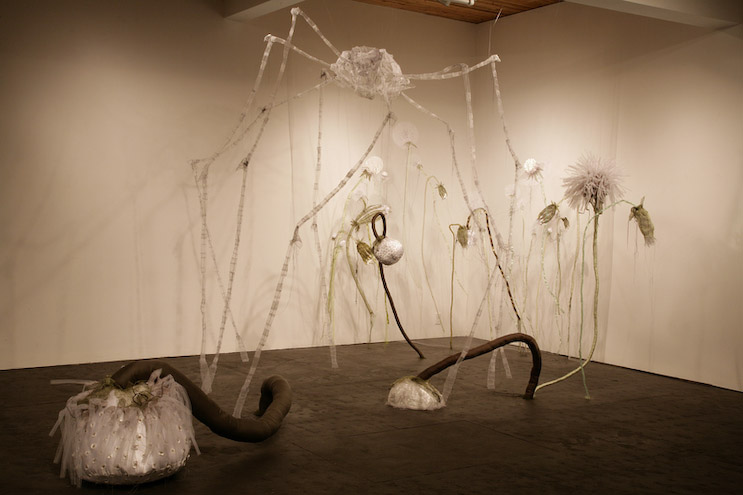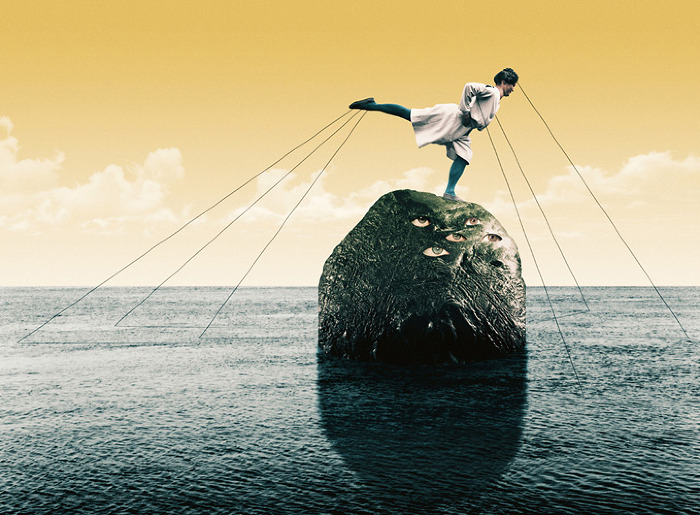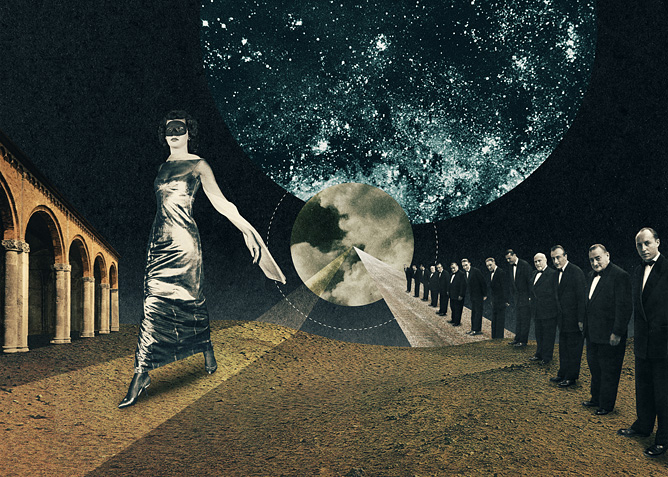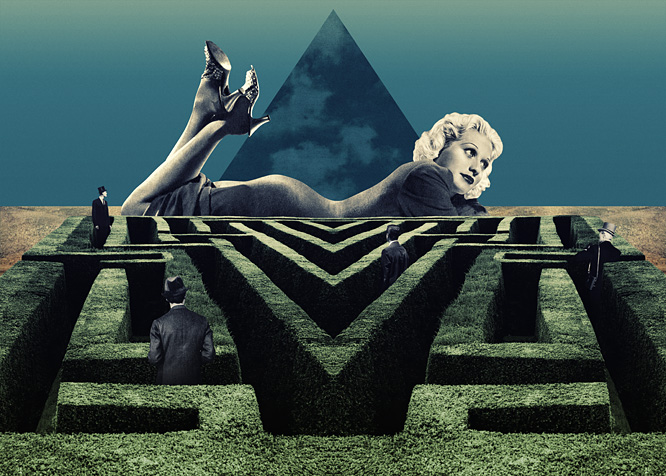In honor of the commencement of our visual conversation, I present words:
The Anti-artist-statement Statement
- by Iris Jaffe on March 29, 2013

I hate artist statements. Really, I do.
As an artist, they are almost always awkward and painful to write, and as a viewer they are similarly painful and uninformative to read.
I also don’t know who decided that artists should be responsible for writing their own “artist statement.” Maybe it was an understaffed gallery in the 1980s, or a control freak think-inside-my-box-or-get-
No, I don’t think that artists should relinquish all responsibility for the interpretation of their work, and yes, I do believe that context and subtext can largely enhance the viewer’s experience of art in general. However, for a number of reasons, to require that artists provide this context directly by summarizing the art historical and cultural relevance of their artwork in textually explicit, objectively framed terms, is ultimately setting them up to fail.
To begin with, visual artists are visual people: we communicate visually. Descriptive writing requires much more specificity than visual communication. If we had a preference or talent for expressing ourselves through text, we would just write essays in the first place — right?
Furthermore, most “real” artists create art on an intuitive basis, which essentially involves some combination of conscious and subconscious thought. This (fine art) is different than both design and illustration, which generally tend to function in much more literal terms. For a fine artist to be entirely aware of his or her creative process and the resulting artwork thereby created is a nearly impossible feat — and one that would require essentially super-human levels of self-awareness and analytical ability on the artist’s part.
Additionally, visual culture is neither unilateral nor linear in its development — it contains a number of interrelated, moving parts that relate to one another in various and complex ways. So while an artist may be aware of his or her direct influences, it is nearly impossible to know the vast conglomerate of influences that allowed these known, identifiable influences to exist in the first place. Furthermore, even if an artist were to successfully identify every single historical influence on his or her work, to include all of these in a 200 word or less statement would be impossible, and to summarize without overgeneralizing, perhaps even more so. Thus, any fine artist who claims to be fully aware of his/her process and the cultural relevancy of their work is either being dishonest with their audience, or speaking out of professional naivety. So, on the positive side, it’s probably a good sign that most artists dislike having to write their own statements.
To continue, similar to the nearly impossible challenge of deconstructing one’s own work and identifying all of its cultural predecessors, the automatic bias and inherited responsibility implied by authoring one’s own statement places the artist in a strategically limited, and often self-defeating position. For starters, the artist is unable to critically address his/her own work. Self-praise is simply inappropriate and carries little credibility beyond self-congratulations, and self-deprecation (outside of an ironic or sarcastic context) is similar or even more disadvantageous — for the obvious reasons. Second, as primary source material the artist’s statement is presented as intention or truth, usually the latter for authoritative purposes, placing the artist in an immediate position of responsibility for any and all “meaning” that he or she identifies or otherwise describes in the artist’s statement. This responsibility causes a wide-range of problems for the artist, which vary in course and degree according to the type of artwork made and the type of artist’s statement written to accompany it.
A few examples of common artist statements and the problems they cause:
The Overwritten Statement
The overwritten statement provides the audience with a clear and detailed account of how an artist’s work relates to the greater trajectory of art history and culture at large. However, due to over-specificity, these types of statements encourage little interpretation beyond their own details, and this often leads to a fixed and unilateral understanding of the work, for which the artist is then held politically and aesthetically accountable. In more severe cases, an overwritten companion text can actually upstage the actual artwork itself: the artist’s statement assumes most or full responsibility for communicating the artist’s ideas, undermining any expressive power that the visual artwork might have on its own.
The “Artistic” Artist’s Statement
As an alternative to the “overwritten statement,” “artistically” written artist’s statements employ poetic lyricism and literary symbolism to communicate deeper underlying concerns in an artist’s work. Because poetry and symbolic fiction are generally more abstract than interpretive text, these types of “artistically” written artist’s statements can form a better complement to the expansive nature of visual language. However, for the viewer who didn’t understand the artwork in the first place, this kind of writing is equally or more confusing than the visual art itself. Furthermore, the worst of this genre can be unknowingly amateur, which in effect undermines the artist’s overall intelligence.
The “Up Close and Personal” Artist’s Statement
Similar to the “artistically” written statement, a statement that is too personal can be more distracting than informative, in this case by blurring the distinction between the artist’s work and their personal identity or art-world celebrity status. This is not always bad and is sometimes desired by the artist or can be essential to understanding the work itself. However, once the boundaries between the artist’s personal life and his or her work are eliminated, this generally has a lasting effect; at times the artist sacrifices the sociopolitical neutrality of his/her work for the duration of their career.
The Overly Vague, Say-Nothing Statement
Unfortunately, the problematic nature of authoring one’s own artist’s statement limits many artists to writing descriptive, factual, or personal (“I statement”) statements, and consequently, many artists default to writing vague and jargon heavy texts, which they have all too obviously spliced together from internet scraps, existing art criticism, and bits and pieces of other artist’s statements no less. Besides being generally uninformative, these types of statements can be especially frustrating or insulting to the educated viewer — much like numerous press release statements that are written in a similar manner.
The (Surprisingly) Well-Written Statement
When an artist does manage to present something honest, to the point, and well written, it is often revealed as having been written by someone else — or proofed to the point of having a similar effect.
Thus, in light of the above, while I believe that the artist him/herself should be the ultimate authority on their own work, it is more effective for both the viewer and the artist if the “artist statement” is written by an outside author (critic, curator, institution, etc.). To explore this argument further, outside authorship allows the artist to communicate with the viewer on a predominantly aesthetic basis, while still providing the audience with a concrete textual platform upon which to build a more meaningful examination of the artwork. This alleviates the artist of having to take direct responsibility for any potentially offensive or controversial content (by allowing the artist’s opinions to exist in visually ambiguous terms) and thereby offers the artist protection, for example, against the loss of support from politically sensitive individuals or institutions. Additionally, statements of outside-authorship function as an interpretation or critique of the artist’s work, which the viewer implicitly receives in the context of the author’s credibility. In comparison to a self-authored text, an “interpretive” text thus broadens the aesthetic potential for an artist’s work by acknowledging it’s own bias, thereby leaving room for further interpretation of the artwork.
In conclusion, because the existing system is so problematic, I believe artists and art institutions alike should seek alternative methods for providing supplemental information to educate audiences and facilitate the viewer’s appreciation and understanding of visual art. For example, I often find that interviews (text, audio, or video) between artists and curators, or artists and other artists, etc., provide a great deal of insight into an artist’s work and creative process. Documentation of the artist’s studio is another way to inform an audience — and Art21 is an online video series that combines these two formats (interview and studio documentation) nicely. The internet enables art professionals on all levels to administer their own improvisations within the existing “art world” system (via digital publication, commerce, etc.) and even offers the potential for creating new systems — so why not? Creativity is rooted in change. If the avant-garde did what everyone else did, it wouldn’t be the avant-garde, and art wouldn’t really be an innovative enterprise — it would be a repetitive one.
How’s that for an artist statement?
http://hyperallergic.com/67670/the-anti-artist-statement-statement/
{ 0 comments }


